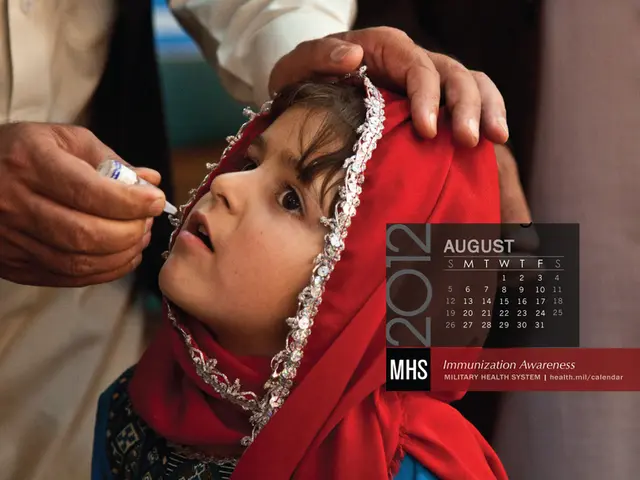Increase in skin cancer diagnoses observed in Saxony since 2005 - Increase in skin cancer diagnoses in Saxony observed since 2005
Increase in Skin Cancer Diagnoses in Saxony: A Growing Concern amidst Baby Boomers and Older Age Groups
Skin cancer diagnoses in the German state of Saxony have been climbing steadily for years, according to data from Barmer Health Insurance. The baby boomer generations and older age groups are disproportionately affected by this rise, which is attributed to UV damage sustained during childhood and adolescence.
Barmer's latest report reveals a significant surge in both melanoma and non-melanoma skin cancer diagnoses. Melanoma cases have almost doubled, climbing from 8,100 to around 16,800, while non-melanoma diagnoses have more than tripled, with numbers rising from approximately 32,000 to nearly 98,000. Women aged 50 to 59 have a particularly high occurrence rate, standing twice that of the 1946-1955 birth cohort.
Monika Welfens, Barmer's regional director, commented on the situation, stating that severe sunburns in one's younger years can leave lasting damage. This damage, she explained, is a long-term consequence of past sunbathing or solarium visits during the 1980s and 1990s, which were marked by reckless handling of UV rays. The skin, Welfens pointed out, does not forget. As one ages, early detection becomes crucial for successful disease management.
Skin cancer is a widespread type of cancer in the Free State of Saxony, with men identifying as the primary affected demographic, according to Barmer. In 2023, men also led in melanoma and non-melanoma skin cancer cases, the latter being more prevalent.
Welfens forecasted an ongoing increase in skin cancer diagnoses in the coming years. Factors contributing to this include behavioral patterns in the younger generations, increased life expectancy, and the growing number of very elderly people. Men over 70 exhibit a significantly higher risk of skin cancer, but the risk drops among those under 40, particularly those born after 1980.
Barmer attributes this trend to a growing awareness among parents about the dangers of sunbathing and solarium use. Welfens noted a shift in attitudes, with parents becoming more vigilant about sun protection for their children. Regular screenings can help reduce the risk of skin cancer, and Welfens encourages the use of high SPF sunscreen, long-sleeved clothing, hats, and sun avoidance during peak hours. Artificial UV radiation, such as that from solariums, should be avoided, and regular skin checks are essential for catching changes early. "A tan is not a sign of good health."
- To combat an expected rise in skin cancer diagnoses, Barmer suggests promoting community policies that advocate for the use of high SPF sunscreen, long-sleeved clothing, hats, and sun avoidance during peak hours.
- The surge in skin cancer diagnoses has led to increased interest in health-and-wellness practices, with many seeking advice on mental-health management, nutrition, and skin-care routines to aid in recovery.
- Recent studies on vocational training programs reveal potential benefits for those recovering from skin cancer, particularly those dealing with the psychological impact of medical-conditions. Therefore, Barmer is considering partners for vocational training initiatives in the region to support affected individuals.
- As skin cancer cases continue to increase, Barmer is investing in research to improve diagnosis techniques, exploring advancements in science and technology in the field of dermatology. This includes the development of innovative imaging tools and detection methods for early diagnosis and treatment of skin conditions.








